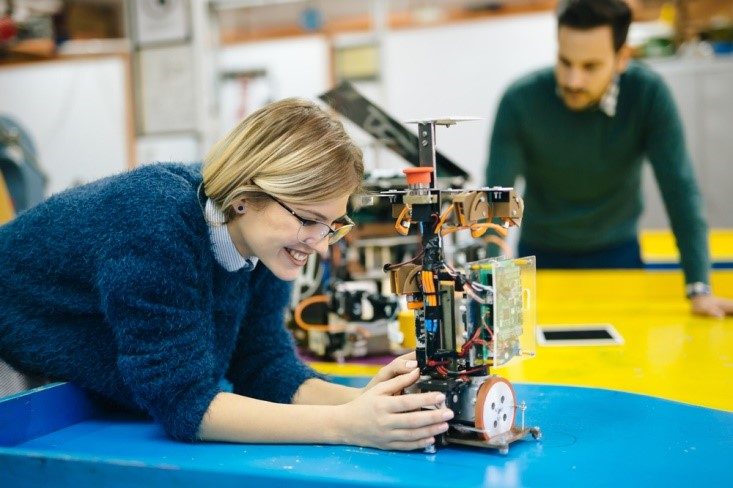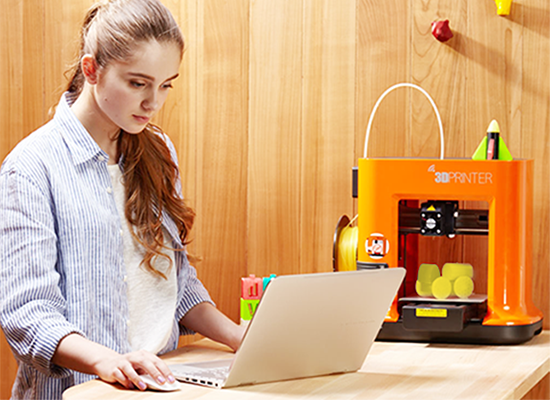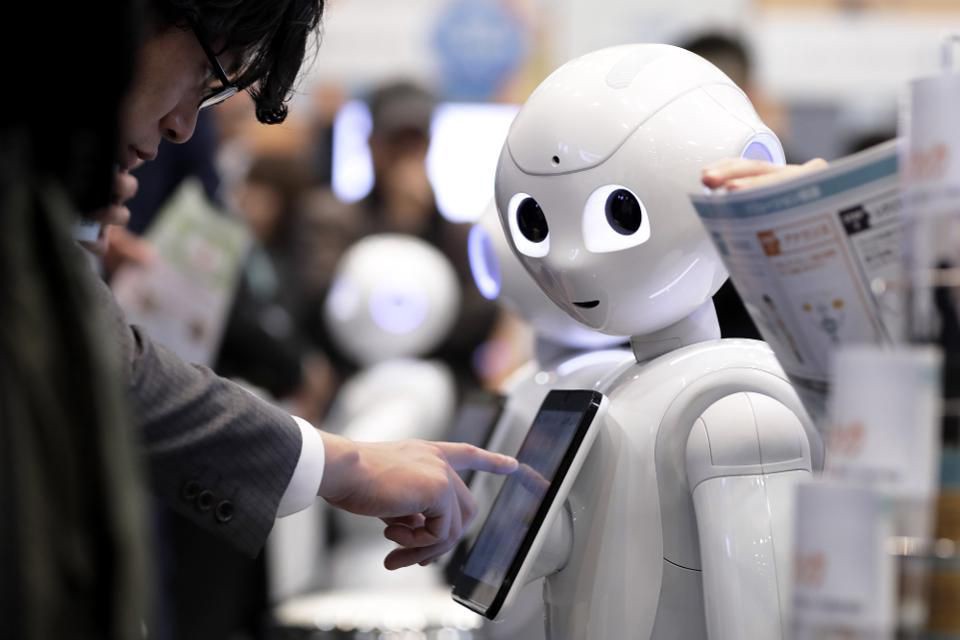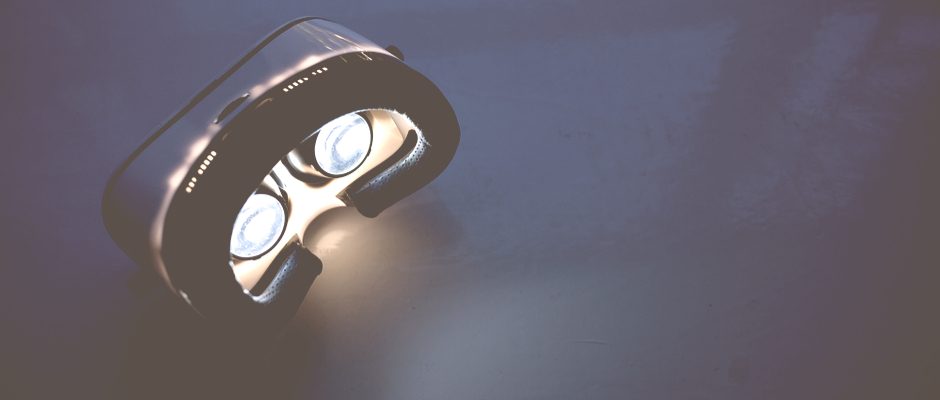How Should We Prepare STEM Teachers?
As the modern world becomes increasingly digital, it will be paramount to create a new generation of innovators in the STEM field. The first step toward creating a more innovative collection of workers in the fields of science, technology, engineering, and mathematics begins in the classroom. Teachers must be properly trained to facilitate STEM lessons to their students and pique their interest from an early age.

We must move all the way back to the way that we train teachers in order to better prepare them to teach STEM subjects. Better teacher education provides an improved platform for all student learning to take place. Everyone wants to see practical ways that we can boost the performance of local STEM programs. The school system can start incorporating some of these key ways that we can help teachers to do their job more effectively.
- 0 Comments
- Oct 21, 2019 10:00:00 AM
- Posted by Natalia Galvis
- Topics: EdTech, STEM, STEMchat, Edchat
How To Use 3D Printing in STEM Classes
one are the days when students could only print on traditional two-dimensional paper. The world of 3D printing is opening up new doors in the classroom setting. With the invention of this technology, teachers can bring lessons to life in a new way that was previously inaccessible. Most classes could benefit from the addition of a 3D printer, but STEM classes can uniquely utilize this new opportunity. The ability to design and physically create small models can be invaluable in these STEM-based courses.

How can educators make the most of the 3D printer in their classroom? Here are just a few ways that this technology can create a more realistic and hands-on lesson to further a child’s grasp of essential concepts.
- 0 Comments
- Oct 18, 2019 12:54:30 PM
- Posted by Natalia Galvis
- Topics: EdTech, STEM, STEMchat, Edchat
Why Should we Invest in STEM Education?
It’s no surprise that careers are becoming more focused in the areas of Science, Technology, Engineering, and Math. According to Edutopia, 80 percent of the fastest growing careers in the US require employees to have some form of STEM education. The U.S. Department of Commerce has reported that over the past ten years, STEM jobs have grown three times as fast as non-STEM jobs. The same study has also reported employees in STEM careers earn 26 percent more than those who are in other careers.

- 0 Comments
- Oct 17, 2019 10:21:49 AM
- Posted by Natalia Galvis
- Topics: EdTech, STEM, STEMchat, Edchat
The benefits of starting to use technology in kindergarten
One of the fears parents often bring up in relation to children and technology is the concern that they are exposed to it too early. Many experts have chimed in trying to define an ideal age at which to allow children to use technology, but it seems to be difficult to agree on how early is too early to get started.

Some parents, teachers and pediatricians advocate a late start, arguing that a frequent use of technology in early childhood interferes with the healthy development of children’s eyesight, brain, and fine motor skills.
However, forcing children to start later than their peers is anachronistic and may put them at a disadvantage: if technology is completely banned from their lives until after their formative years, they will be digital immigrants in a generation of digital natives.
Here are some reasons why it might be beneficial to reach a compromise between the need to preserve the children’s health and the increasing necessity of keeping them up to date with the latest technologies.
- 0 Comments
- Oct 16, 2019 10:00:00 AM
- Posted by Natalia Galvis
- Topics: EdTech, STEM, STEMchat, Edchat
7 Educational Uses for 3D printing
When someone says that they have a 3D printer, many people visualize a printer that produces 3D images on a sheet of paper. In actuality, a 3D printer goes beyond an image on paper and brings the object to life in real 3D. Layer by layer, the 3D printer can replicate images created in CAD programs. Any creation in supported design programs can be brought into the real world. What are some educational values of the 3D printer?

- 0 Comments
- Oct 14, 2019 1:20:00 PM
- Posted by Natalia Galvis
- Topics: EdTech, STEM, STEMchat, Edchat, 3D-Printer
Can Robotics Teach Problem Solving to Students?
Critical thinking and problem-solving skills are essential to success at university and in later life. However, the traditional classroom model has done a poor job of imparting these skills to students. The way children have learned in the classroom for generations has focused on lectures and worksheets. Past generations would depend on group sports, clubs and teenage jobs to impart these vital skills onto students.

However, new ideas suggest that robotics may hold the key to teaching problem-solving skills to students. Using robots to teach real-world skills may be a strange concept, but is it worth exploring? We think so and here’s why.
- 0 Comments
- Oct 11, 2019 10:10:00 AM
Key trends in K12 robotics education
Robotics education is becoming increasingly commonplace in schools. This is largely due to the fact that students in K12 schools will graduate into a workforce that’s rife with technology, in an era where robots will become widely used in our everyday lives.
Even if these kids choose a career other than coding or robotics, learning robotics teaches them many important skills such as analytical thinking, programming, teamwork, collaborative thinking, innovation and more. It can be easily incorporated into STEAM education, which is becoming more popular in schools worldwide.

- 0 Comments
- Oct 10, 2019 10:00:50 AM
Virtual Reality In Education
Slowly but surely, virtual reality and augmented reality are making their way into the mainstream. While both (known along with mixed reality as “reality technologies”) have been around for a couple of decades, they were until relatively recently reserved to a small group of aficionados. Technological advancements, interest from some of the biggest tech companies around and the realization that VR can help us out in many aspects of our day-day-lives now mean that more and more people are taking an interest. Today, VR in education is being used widely.

- 0 Comments
- Oct 9, 2019 10:00:00 AM
- Posted by Natalia Galvis
- Topics: EdTech, STEM, Realidad Virtual, STEMchat, AR, Edchat, Augmented Reality
7 Creative Ways to Fund Classroom Technology
Including technology in your classroom is an important way to help students learn and grow. However, sometimes the budget constraints of your district or school may hinder progress. It’s important to know that there are ways to support technological growth at your school, without dipping into your savings. Here are a few creative ways to raise funds for classroom tech.

- 0 Comments
- Oct 8, 2019 10:00:00 AM
- Posted by Natalia Galvis
- Topics: EdTech, STEM, Technology, STEMchat, Edchat, Digital Technology
Why VR is so effective for learning
Imagine taking a class about the solar system, but instead of reading a textbook section about gravitational pull you’re soaring around the rings of Saturn. Or maybe you’re a surgical resident and rather than watch a video about how to do a face transplant you actually perform one.
Virtual reality (VR) presentations have proven to be more than just novel visual aids for education. They’re powerful learning tools. Research shows that retention rates rise when students or job trainees use virtual reality to immerse themselves in a lesson or scenario.

- 0 Comments
- Oct 7, 2019 10:10:00 AM
- Posted by Natalia Galvis
- Topics: EdTech, STEM, VR, Realidad Virtual, STEMchat, Edchat
Relevant Posts
Popular Posts
Subscribe to Email Updates
-
I Want To Learn MoreADDITIONAL INFORMATION


